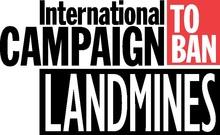Resource information
Key developments since May 2002: "Myanmar’s military has continued laying landmines. At least 15 rebel groups also used mines, two more than last year: the New Mon State Party and the Hongsawatoi Restoration Party. Nobel Peace Laureate Jody Williams and ICBL Coordinator Liz Bernstein visited the country in February 2003."..."Myanmar’s ruling State Peace and Development Council (SPDC) has not acceded to the Mine Ban Treaty. Myanmar abstained from voting on the pro-Mine Ban Treaty UN General Assembly Resolution 57/74 in November 2002. SPDC delegates have not attended any of the annual meetings of States Parties to the Mine Ban Treaty or the intersessional Standing Committee meetings...Myanmar has been producing at least three types of antipersonnel mines: MM1, MM2, and Claymore-type mines...Myanmar’s military forces have used landmines extensively throughout the long running civil war...Nine out of fourteen states and divisions in Burma are mine-affected, with a heavy concentration in East Burma. Mines have been laid heavily in the Eastern Pegu Division in order to prevent insurgents from reaching central Burma. Mines have also been laid extensively to the east of the area between Swegin and Kyawgyi...No humanitarian demining activities have been implemented in Burma...SPDC military units operating in areas suspected of mine contamination have repeatedly been accused of forcing people, compelled to serve as porters, to walk in front of patrols in order to detonate mines...



